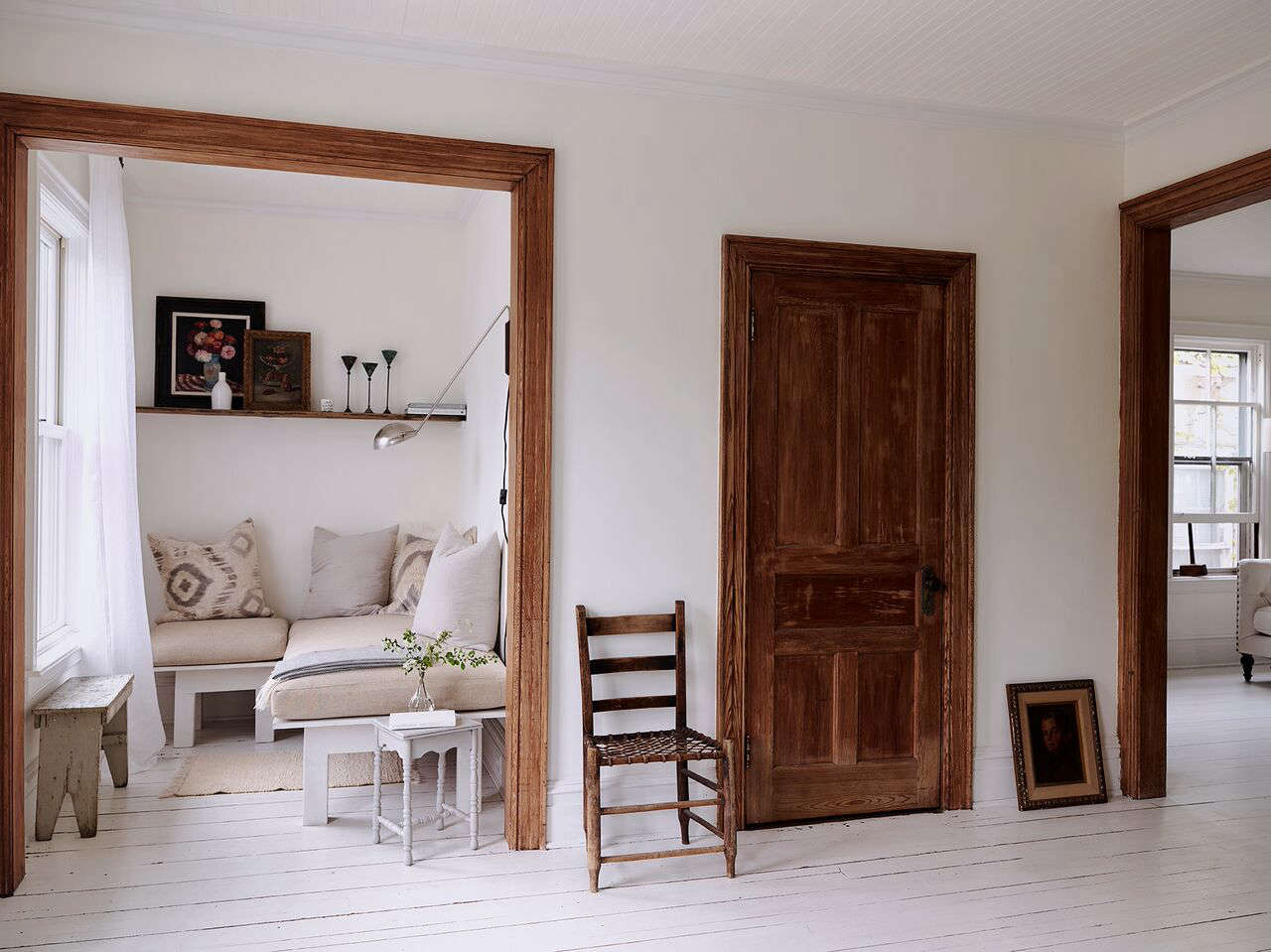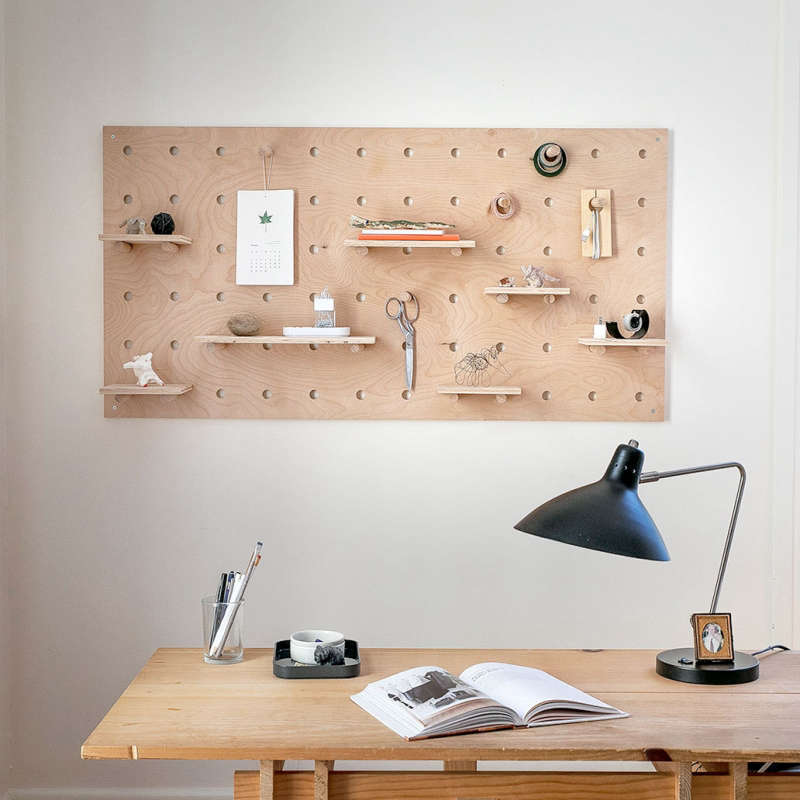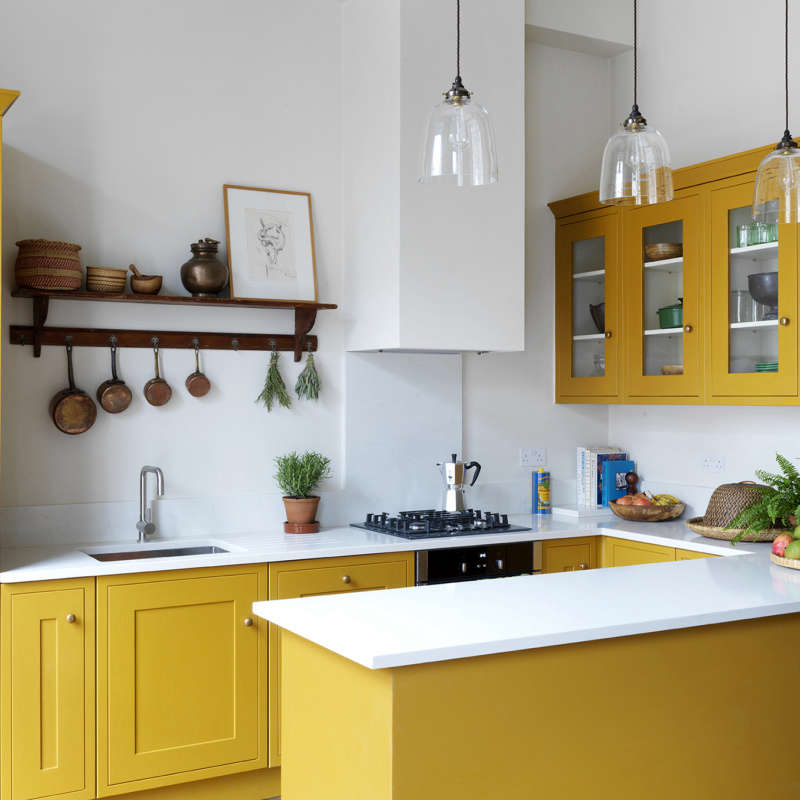We’re longtime fans of architectural designer Tom Givone, who weaves handsomely weathered building materials into his renovation projects, whether he’s converting upstate New York barns into events pavilions or sprucing up his own clapboarded Manhattan townhouse. (For evidence, see Givone’s four-year renovation of a dilapidated 1820 farmhouse in the Catskills: The Country Rental: A Floating Farmhouse in Upstate New York.) Here are some surprising ways he incorporates antique parts from his stockpiles into new construction, and why he loves their flaws.

1. When sourcing sinks from salvage, consider the fittings.
“I’ve reused antique ones made of concrete, stone, metal, porcelain enamel,” Givone says. “If you need larger holes for modern valves, almost anything can be carefully drilled through or cut by torches.” (Givone used a found apron-front sink in the Floating Farmhouse and installed the fixtures directly into the countertop, negating the need for specifically-sized holes.)

2. Treat vintage baths as focal points.
“New ones can be wrapped in salvaged wood, and old ones can be wrapped in stainless steel. When you have planes of new materials as backdrops, it shifts the dynamics and the antiques become like art objects.”

3. Don’t abandon the idea of salvaged hardware if you can’t find a matching set.
“If the knobs around a room don’t match, as long as everything’s approximately the same age, it still feels like it goes together. Time can be another design element that resonates.”

4. Embrace crookedness.
“A door that’s a little crooked, with paint that’s crackled—the imperfections add to the charm. You’re using the passage of time, in a sense, as a design tool.”
5. Seek out unexpected experts.
“Over my New York kitchen table, I hung a heavy beautiful light that was used at a wharf,” Givone says. “I had the dents in it banged out at an auto repair shop. I get creative about how to repair what I find.”

6. Don’t discard bits and pieces.
Consider it deconstructed salvage. Some ideas for stone and terracotta ornament: “Corbels can be supports for benches. Stone window lintels can be used for steps outdoors,” Givone says. “A white marble slab, maybe from the top of an elaborate buffet, can work beautifully as a hearth. If you find an object you love, get it. You’ll find a way to use it. In the right context, it will be a knockout.”

7. Don’t just go to estate sales—ask to sleuth the estate.
“Doors, siding, molding, that my neighbors threw out—I harvest everything,” Givone says. “When I go to tag sales and yard sales, and there’s nothing out for sale that I want, I ask if I can go into the barn or garage or basement: ‘You mind if I go poke around?’ And sometimes that’s where I find treasure. If you have your radar out, you’ll find things.”
To get the Floating Farmhouse look, see Steal This Look: The Ultimate Farmhouse Kitchen. And for more in our series on salvage, see Expert Advice: What to Source from Salvage, with Zio & Sons.
More salvaged finds:
- Before and After: A Buzzfeed Founder’s Renovated Rowhouse, Budget Edition
- A Showroom in Italy Where Everything Is Made from Salvaged Materials
- A Brownstone in Brooklyn, Reborn
Frequently asked questions
What is salvage?
Salvage refers to materials or items that have been rescued or reclaimed from buildings, homes or properties that are scheduled for demolition or renovation.
Why should I source from salvage?
Sourcing from salvage is a great way to find unique and affordable materials or items that are not available in the market anymore. It also promotes sustainability by reducing waste and conserving resources.
What kind of items or materials can I find in salvage yards?
You can find a wide range of items or materials in salvage yards including doors, windows, flooring, lighting fixtures, hardware, plumbing fixtures, decorative elements, and furniture among others.
How do I know if the salvage yard is reliable?
Research the reputation of the company and read reviews from previous customers. Make sure they have a license for salvaging, and they comply with safety regulations. You can also visit the site in person to assess their inventory and check for any damages or hazards.
What should I consider when sourcing from salvage?
Consider the type and quality of the item or material, the condition, and the compatibility with your project. You should also factor in the shipping or transportation cost and the availability of replacement parts.
How do I clean and maintain salvage items?
Cleaning and maintaining salvage items depend on the type and condition of the item. Use mild soap and warm water to clean metal or wood surfaces. Avoid using harsh chemicals or abrasive cleaners that can damage the surfaces. Regularly inspect and repair any damages to ensure its longevity.




Have a Question or Comment About This Post?
Join the conversation